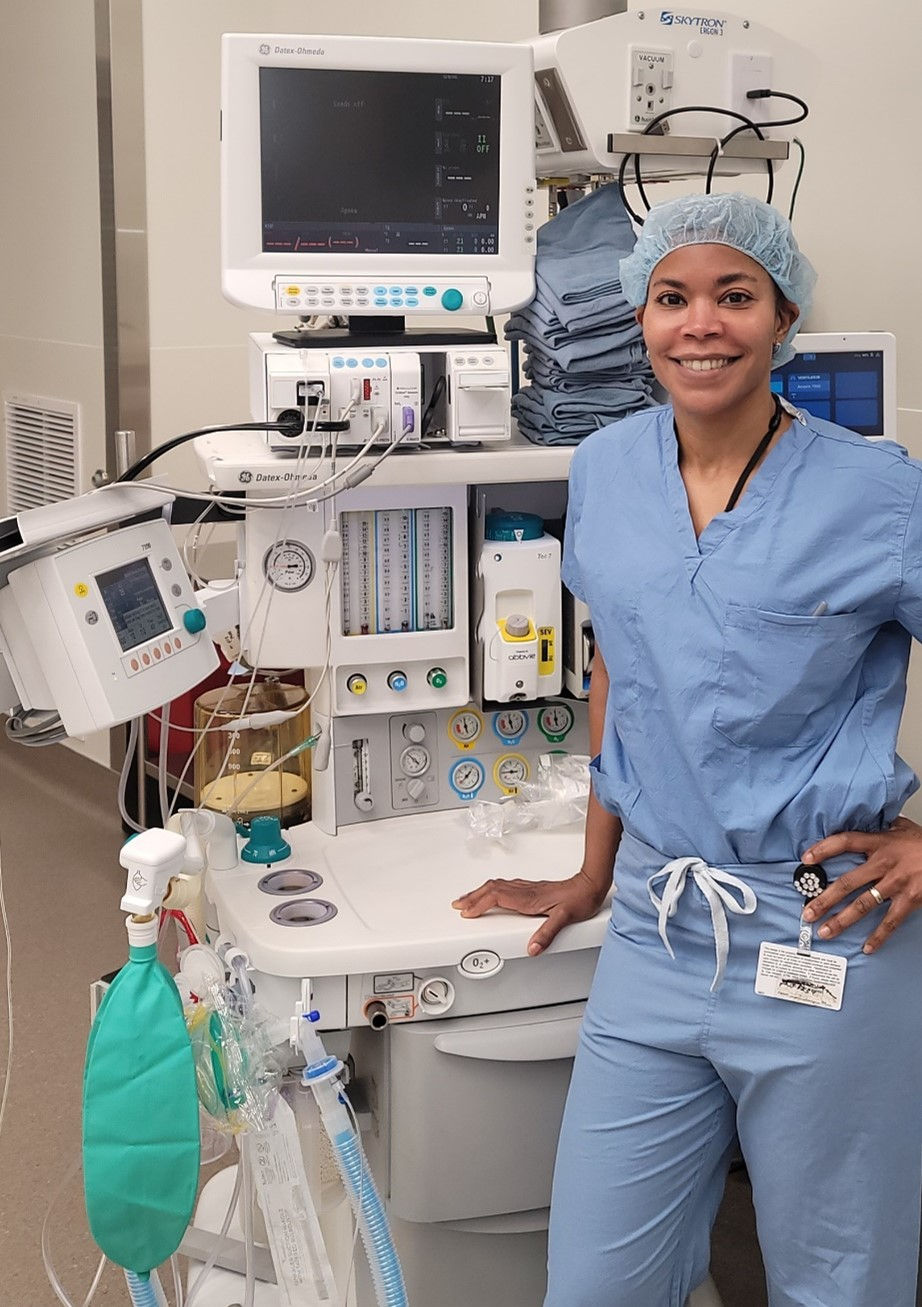Tita Pale Ndognjem, DNAP, CRNA, says he never knew about Black History Month until he came to the United States. Yet, he’s the perfect example for why Americans pause every February to pay tribute to individuals like him.
Tita’s career began in his native country of Cameroon, and it took him through France, England, and now the United States. There were many challenges along the way. Learning the cultures, health-care systems, and specific attributes of each country has been a herculean task. Licensure procedures, socio-cultural and legal implications, and adapting to the environment of care are all very different as well.
However, Tita says, none of those compared to the challenges of anesthesia school, especially for a minority male in a majority white female profession, where he always has to earn the trust of his colleagues, patients, and mentors. The emergence of COVID-19 with the ensuing social and economic disruptions right at the beginning of anesthesia school made matters worse.
Still, Tita persevered. Among his achievements was graduating from the Excela Health School of Anesthesia in 2022 and then passing the NBCRNA certification exam at first trial. He is currently employed at the University of Maryland Capital Region Medical Center in Largo, Md.
From the very beginning, Tita chose the profession because of his passion and desire to provide service to others in need. He views his career as vocation and as a call to compassionate and dedicated service to his patients.
For that guidance, he has a number of mentors to thank: Nkam Mongwa; Dr. Edwin Aroke; Dr. Mike DeBroeck; Dr. Danielle Gray; Dr. Kelly Mallone; Dr. Sue Tranchine; Dr. Jessica Pool; Dr. Laura Wiggins; and Joe Herman, just to name a few.
“This list is endless because it truly takes a village to raise a child,” Tita said (African Proverb).

Beyond providing compassionate, quality, and evidenced-based anesthesia services to his patients, Tita also plans to continue his involvement with the American Association of Nurse Anesthetists (AANA), the Pennsylvania Association of Nurse Anesthetists (PANA), and the Association of Cameroonian Nurse Anesthetists in America (ACNAA) to give back to the profession by contributing financially, mentoring other nurses seeking admission in nurse anesthesia programs, and learning more knowledge and skills.
In other words, watch for him to help shape the future of the profession, which, in a way, is exactly what Black History Month is all about, as Tita now knows.
“It is a time to celebrate the contribution of people of African descent to the great American story, as well as the continuous search for equity, diversity, and representation of all the demographic strata of the American family,” Tita said. “It is a time to ponder on the specific issues that disproportionately affect people of African descent in America and make strides toward a more just and fair union.”














